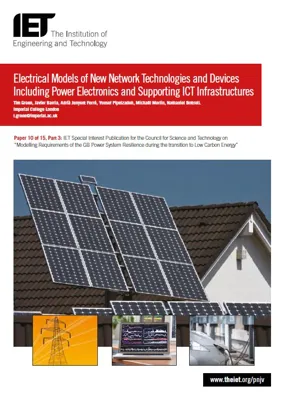Electrical Models of New Network Technologies and Devices Including Power Electronics and Supporting ICT Infrastructures

There are substantial fundamental differences between the characteristics of the electro-mechanical machines at the heart of a conventional power system and new technologies such as power electronic power converters and digital communication systems. The main differences concern the time-horizons over which the defining characteristics emerge but also in the fact that the control loops rather than physical parameters define the important characteristics and in the discrete-time nature of the systems.
Modelling a future power system becomes a task of modelling a system of systems (electrical, electronic, communications etc.) and is a challenge faced in other sectors such as aerospace. The challenge is to create models of new sub-systems that capture sufficient detail to represent their features on the timescales of interest without burdening the computation with undue detail.
For steady-state and time-series sequential application of steady-state models, there are few difficulties. The challenges arise in modelling fast dynamic effects for various forms of stability and protection studies.
